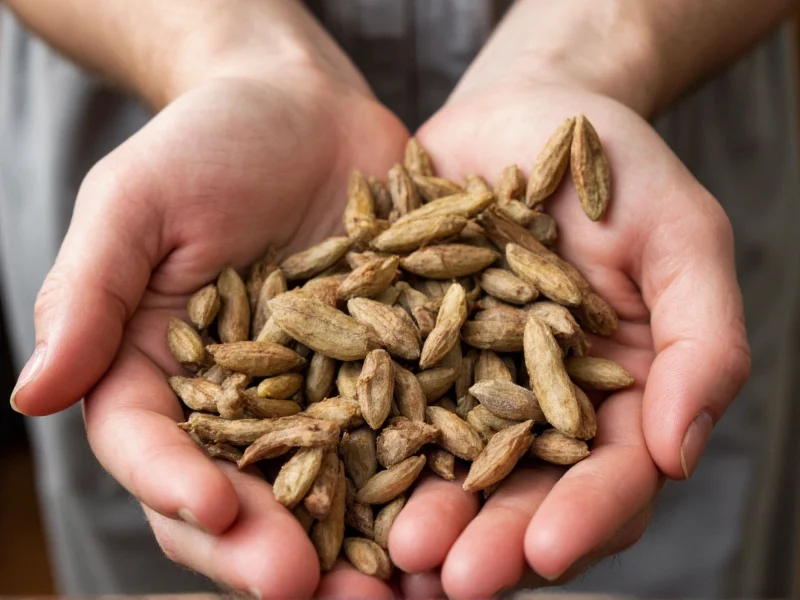Understanding where seeds come from requires examining the remarkable reproductive process of flowering plants. Seeds represent nature's sophisticated mechanism for plant propagation, encapsulating a new plant's potential in a compact, protected package. This evolutionary adaptation has allowed plants to colonize diverse environments across the globe.
The Complete Journey from Flower to Seed
Seed formation begins with the flower, nature's reproductive structure. Within the flower's ovary lie ovules, each containing an egg cell. The pollination process initiates seed development when pollen grains—carrying male genetic material—reach the flower's stigma. This can occur through various methods including wind, insects, birds, or other animals that transfer pollen between flowers.
Once pollen lands on a compatible stigma, it germinates and grows a pollen tube down through the style to reach the ovary. The male gametes travel through this tube to fertilize the egg cell within the ovule. This critical moment of fertilization triggers the transformation of the ovule into a seed.
Anatomy of a Developing Seed
As the fertilized ovule develops into a mature seed, it forms three essential components that work together to ensure the next generation's survival:
| Seed Component | Function | Origin |
|---|---|---|
| Embryo | The baby plant that will grow into a new organism | Develops from the fertilized egg cell |
| Endosperm | Nutrient-rich tissue providing energy for germination | Forms from the fusion of additional male nuclei with ovule cells |
| Seed Coat | Protective outer layer shielding the embryo | Develops from the ovule's outer layers |
Natural Variations in Seed Formation
Different plant families have evolved unique seed development processes. In monocots like grasses and lilies, the endosperm remains prominent in mature seeds, while dicots like beans and sunflowers often absorb most of the endosperm during development, storing nutrients in the cotyledons instead.
Some plants produce seeds without fertilization through a process called apomixis, creating genetically identical offspring. Others have developed specialized mechanisms where seeds only form after specific environmental triggers, ensuring optimal conditions for the next generation.
The Evolutionary Significance of Seeds
Seeds represent a major evolutionary advancement in plant reproduction. Unlike their spore-producing ancestors, seed plants can protect their embryonic offspring from drying out and provide them with essential nutrients. This adaptation allowed plants to thrive in diverse terrestrial environments far from water sources.
The development of seeds approximately 340 million years ago during the Carboniferous period revolutionized plant life on Earth. This innovation enabled plants to colonize drier habitats and develop more complex life cycles, ultimately leading to the diverse flora we see today.
Seed Dispersal: Nature's Distribution System
Once formed, seeds employ remarkable strategies to travel away from the parent plant. Some seeds have wings for wind dispersal, others attach to animal fur, and many develop tasty fruits that encourage consumption and subsequent dispersal through animal droppings. Understanding where seeds come from originally requires appreciating these sophisticated dispersal mechanisms that ensure plant species survival.
From Seed to New Plant
The journey doesn't end with seed formation. When conditions are right—adequate moisture, appropriate temperature, and sufficient oxygen—the seed germinates. The embryo resumes growth, sending roots downward and a shoot upward, beginning the cycle anew. This complete understanding of how plants produce seeds reveals nature's elegant solution for species continuation.
Frequently Asked Questions
Do all plants produce seeds?
No, not all plants produce seeds. Seed plants (spermatophytes) include gymnosperms like conifers and angiosperms (flowering plants). However, ferns, mosses, and algae reproduce through spores rather than seeds, representing earlier evolutionary forms of plant reproduction.
How long does it take for a seed to form after pollination?
The timeframe varies significantly by plant species. Some seeds develop within weeks (like annual flowers), while others may take months (many fruit trees) or even years (some conifers). Factors including plant type, climate, and environmental conditions all influence the seed development timeline in flowering plants.
Can seeds form without pollination?
Yes, through a process called apomixis, some plants can produce seeds without fertilization. This asexual reproduction method creates genetically identical offspring to the parent plant. Certain grasses, dandelions, and citrus varieties use this biological process of seed development as an alternative to traditional pollination.
What happens inside a seed as it develops?
During seed development, the fertilized ovule undergoes dramatic changes. The embryo forms from the zygote, developing root and shoot structures. The endosperm accumulates starches, proteins, or oils to nourish the embryo. Simultaneously, the seed coat hardens to protect against physical damage and moisture loss, completing the biological process of seed formation.
How do seeds know when to germinate?
Seeds contain sophisticated biological mechanisms that respond to environmental cues. Many require specific temperature ranges, moisture levels, and light conditions to break dormancy. Some seeds need to pass through an animal's digestive system, experience fire, or undergo seasonal temperature changes before they'll germinate, ensuring optimal conditions for the new plant's survival.











 浙公网安备
33010002000092号
浙公网安备
33010002000092号 浙B2-20120091-4
浙B2-20120091-4